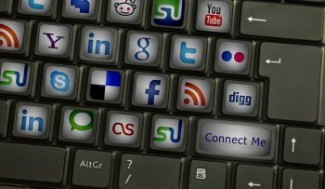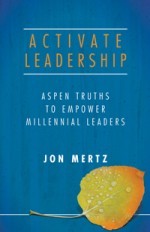Guest Post by Jon Mertz
Millennials are more connected than any other generation before them. Through social platforms like Facebook, LinkedIn, and Twitter, they connect with others far and near. Collaboration around problem-solving and purpose-enabling activities happens quickly and expansively.
Prior to the social world, collaboration did occur, but it took place mostly face-to-face. Effort was required to seek out diverse opinions and viewpoints. Now Millennials are leading the way in expanding collaboration in three new ways: individual challenges, team problem-solving, and community difference-making.
Individual Challenges
During the course of any given workday, issues arise such as how to handle certain personalities, how to navigate becoming a new manager, or how to manage across departments. No matter the situation, answers are to be found through LinkedIn connections or Facebook friends.
Through simple connections, a question can be posed and answered by another person in another state or country. In a Facebook message exchange, support is given in how to navigate personalities and move forward in a more productive manner. Collaboration occurs amoung young and old intertwined with different industries, states, and countries. Perspectives are diverse as the time zones and generations crossed.
Team Problem-Solving
Millennials consume news differently. First, they use Facebook as a place to read different trusted news articles. Intertwined in their news feed is actual in-depth news articles along with other personal stories. Second, after they read a news story, they interact with the content with their social connections. They tap into diverse views and opinions about what was just read.
In a recent news study, 70% of Millennials said that their social streams consisted of an even mix of similar and different opinions to their own. In fact, only 12% said the opinions they see are mostly similar to their own. Diversity of viewpoints help shape their opinions and paths forward.
When approaching business problems, the social circle extends far beyond the immediate business connections. Conducting research on how to solve a problems is done simply by posing a question in a social network. Researching competitors happens in the same way.
The shift is to solve problems, conduct research, and analyze solutions in a collaborative, extended manner. What this means is diverse opinions are engaged outside the four walls of a workplace. This does not mean collaboration is absent within an immediate workplace. It means collaboration is more extensive.
Community Difference-Making
Meet CCChampions – Connecting Children with Champions. Sidney Kushner took the wise fatherly advice to heart – “There’s always someone out there smarter than you.” Isn’t this the heart of collaboration?
CCChampions started as a way to support kids with cancer by facilitating 6-month-long friendships with the most inspirational people in Pittsburgh. It starts with a simple question to the kid: What do you want to be when you grow up? From there, an inspirational person in that role is found.
One of the many things wonderful about this story is the different levels of collaboration. Sidney shadowed oncologists to learn about cancer and worked with families who were working through the challenges of cancer. Local collaboration and learning occurred, along with an emerging and extensive social platform.
Awareness and involvement extends far beyond Pittsburgh. I discovered Sidney’s work through a social connection, Deb Mills-Scofield. Deb connected Sidney to Vala Afshar, CMO at Extreme Networks, who then empowered CCChampions further by recognizing them as part of their Heroes Among Us program. Since 2011, they have helped over 150 kids. Just in this short excerpt, the momentum and power of social collaboration takes initiatives to a new level of possibility and achievement.
Many other examples exist on how the power of social collaboration is being leveraged by Millennials to drive change. Here are a few more quick examples:
- Food Recovery Network – ignited a movement to use leftovers from college campuses to feed the hungry.
- Common Sense Action – a bipartisan advocacy organization finding collaborative solutions for economic and social problems.
- The Can Kicks Back – focused on raising awareness and driving action around economic and financial challenges.
Collaboration is being extended across many old boundaries, bringing diverse viewpoints and different generations together to solve real problems in real ways. This is inspired collaboration.
The Dangers of Social Collaboration and How to Avoid Them
Technology can be harnessed for good but there are pitfalls to avoid.
- Being too socially connected can come at the expense of local community connections.
- Collaborating all the time can crowd individual think time.
- Collaboration without resolution can lead to extreme frustration and stalemate.
These dangers can be dodged if you:
- Unplug: Time needs to be set aside to disconnect from all electronic forms of interaction. We need to focus on the individuals immediately around us as well. Empathy will suffer if we do not really connect with the people nearest to us. Unplugging from social outlets will enable us to plug into what is happening down the hall and across the street. Always engage in real time with the people really close to you.
- Time to think: Collaboration is a good thing but we need to have our own personal think time. Our minds work in wondrous ways, and tapping into our thoughts is a great way to discover an idea or spark a new direction. Mindfulness is a way to sort through our thoughts. Taking the time to think, consider, and renew is essential to being the best collaborative partner possible.
- Getting unstuck from too much analysis and opinion: With many diverse perspectives, it is easy to keep wanting more. Collecting endless information and engaging with numerous individuals can leave much unsolved. Yes, we will have more information and insights yet we need to move projects forward too. Lines need to be drawn as to when enough is known and it is time to make a decision, try an approach, and then learn from the actions taken.
We need to embrace the new ways of collaboration while avoiding the dangers of getting too weighed down and distracted by the increased number of connections. And we need to learn between the generations while supporting each other.
Jon Mertz is the author of the new book, Activate Leadership: Aspen Truths to Empower Millennial Leaders.
Activate Leadership draws new wisdom from an ancient source—aspen groves—to inspire Millennials to lead on purpose. The time for new leadership has arrived. Activate Leadership offers Millennials an inspired, workable path forward. It is available now at Amazon.
Jon is one of the Top 100 Thought Leaders in Trustworthy Business and highlighted as one of the Leaders to Watch in 2015 by the American Management Association. On Thin Difference, he brings together a community to inspire Millennial leaders and close the gap between two generations of leaders. Follow Jon @ThinDifference.















This post is both inspiring and informative! I had no idea that any of these avenues of service existed and that they exist because of young millennials! There is no doubt this generation knows how to get things done.
Jane,
Thank you! I have learned a great deal from Millennials in how they are using social technologies to empower collaboration in new, better ways. Their reach is great and their desire to solve problems is spot-on. Thanks!
Jon
Good points! I wasn’t seeing it as social collaboration, but now that you point it out, it raises my awareness about other possibilities. Thanks also for acknowledging the dangers. I think we tend to see it as either all good or all bad.
Jo Ellen,
Appreciate your feedback! Yes, we need the right tempo between social and in-person collaboration. There is much good in both, and we can accomplish a lot through both. I am grateful for the work Millennials are doing to leverage social collaboration in good ways. Thank you!
Jon
ps Your book sounds interesting, Jon. I’m going to check it out.
Very grateful, Jo Ellen! Let me know what you think. Thanks! Jon
Great article! I’m one of the Millennials you are referring to and want to thank you for taking a stand about the positive side of the time we spend communicating electronically. I’m really tired of all the negativity. Heading to amazon to get a copy of your book. Looking forward to reading it.
Thank you, Jack. I have been very impressed by what Millennials are doing and how they are collaborating to make real change happen. Your work is opening the eyes of other generations! Thank you for all you do and let me know what you think of Activate Leadership. Very grateful, Jon